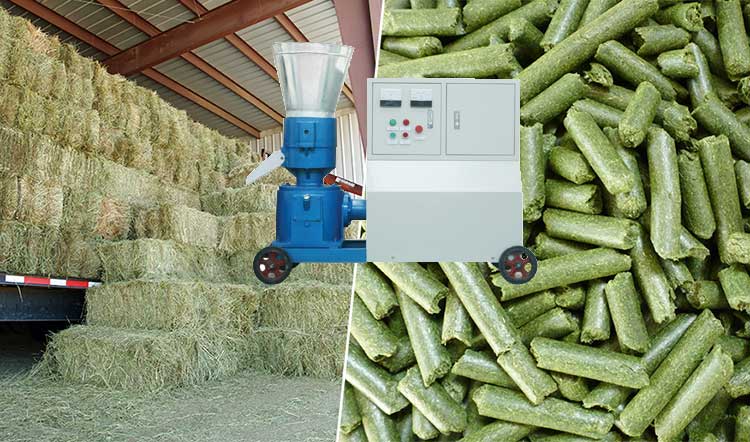Grass is a very common plant that distributes around the word. You can see it almost everywhere, such as forest, farmland, square lawn, and even the sides of road. In the past, grass was often used as feed for livestock and poultry; but now it is widely processed into biomass grass pellets.

The benefits of making biomass grass pellets
With the wide distribution and sustainability of raw materials, grass pellet resource is becoming an available alternative of traditional fossil fuels. Grass pellets can help to expand the development space of traditional agriculture, and provide a new revenue stream to the farmers. As a renewable system, the production of grass pellets has many features like low-tech, small-scale and renewable energy system. With these factors, grass pellets can be easily produced, processed and consumed just in local. Grass pellet has a positive impact on rural communities and helps to rid our dependence on imported oil.
As an eco-friendly resource, grass pellet has high combustion efficiency. Burning grass pellets causes no pollution problems and produces almost the same amount of heat as wood pellets. Grass pellets fuel is much better for the environment because it emits less greenhouse gases than coal, oil and natural gas. We don’t need to worry about the supply of grass, because the grass is perennial and it can grow all the year round. Furthermore, grass does not need to be fertilized or watered and it can be grown even on poor land. Because of the rising cost of fossil fuels and the shortage of energy resource, grass pellets are becoming more and more popular. The most important point for grass pellets is that they can be made at home completely. Forming the grass into pellets allows the materials to be handled and stored easily, transported economically, and burned efficiently. The grass is soft and light, so that the drying process can take place in the field, which can reduce the production cost.
Factors of biomass grass pellets production
Grass pellet mill is very convenient for making grass pellets and it is the core equipment in production of grass pellets. In general, the quality of grass pellets depends on the quality of pellet mills. After the process of grass pellet mill, high quality grass pellets would have features like high intensity and smooth surface, those help pellets more popular with consumers.
Before putting grass into a pellet mill, you need to cut grass into small pieces at first. Hammer mill is a machine that pulverizes grass into powers. In large-scale plant, a hammer mill is necessary to increase the production capacity.
The moisture content of grass is the key factor that affects the quality of grass pellets. Practice shows that, the optimum moisture content of grass is 13%-16%. When the pellet mill is working, the extrusion of spare parts heat the grass to 70℃ in normal circumstances. On the process of high temperature cooling to room temperature, water content generally reduce by 3%-5%. So after cooling, the water content of the grass is not more than 11%. Low moisture content is also important for finished grass pellets, for low moisture content means high density, high efficiency and long-term storage.

How to make biomass grass pellets
If you want to make grass pellets, you should have a grass pellet mill first. According to different applications, you can choose small grass pellet mill for small home use and large grass pellet mill for commercial production flexibly.
Small grass pellet mill is also called household grass pellet mill, it is often used in small farms for its compact design and easy operation. There are 4 different types of driving forces for you to choose: electric engine, diesel engine, gasoline engine and PTO.
To make pellets for commercial production, you should have a series of associated equipments, like pellet mill, hammer mill, rotary dryer, cooler and packing machine. Form them into a complete line, and then you can produce grass pellets like other biomass pellets.
The making process of biomass pellets is mainly as follows:
- Crushing – Cut the grass into small pieces by a hammer mill. The use of hammer mill can increase greatly the production efficiency.
- Drying – Control the moisture content of grass within a proper range, too high or too low would both influence the density. If the moisture content is too high, you could put grass in a rotary dryer or just in the sun.
- Pelletizing – Put the grass with proper moisture content into a pellet mill. In the mill, grass would be extruded by die and rollers, and then shaped in pellets at last.
- Cooling – Cool down the grass pellets to room temperature. After getting out of the pellet mill, the temperature of grass pellets is very high.
- Packing and Storage – Pack the grass pellets in bags and store them in cool, dry and ventilated locations under normal temperature. Keep them far away from fire, sunshine and rain.



